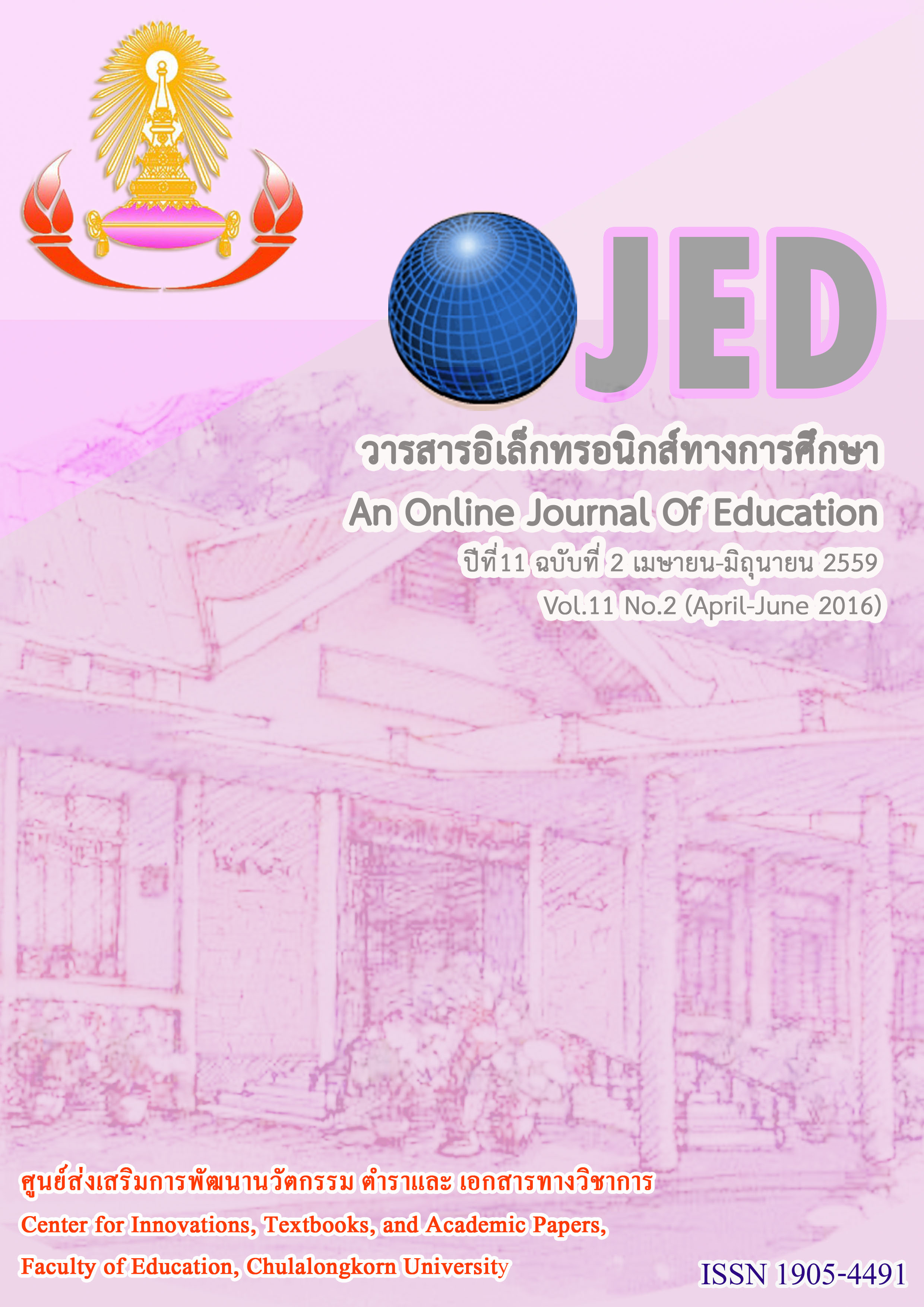วอชแบคของครูในโรงเรียนที่มีบริบทต่างกัน TEACHERS' WASHBACK OF DIFFERENT SCHOOL SETTINGS
Keywords:
วอชแบค, พฤติกรรมการจัดการเรียนการสอน, บริบทโรงเรียน, WASHBACK, CLASSROOM MANAGEMENT, SCHOOLS CONTEXTSAbstract
การวิจัยครั้งนี้มีวัตถุประสงค์เพื่อ (1) ศึกษาสภาพปรากฏการณ์วอชแบคของครูในประเทศไทย และ (2) วิเคราะห์เปรียบเทียบความแตกต่างของระดับพฤติกรรมการจัดการเรียนการสอนที่สะท้อนวอชแบคของครูในโรงเรียนที่มีบริบทต่างกัน ได้แก่ สังกัดและความมีชื่อเสียงของโรงเรียน ตัวอย่าง คือ ครูระดับชั้นประถมศึกษาและมัธยมศึกษาในโรงเรียนสังกัดสำนักงานคณะกรรมการการศึกษาขั้นพื้นฐาน (สพฐ.) และครูสังกัดสำนักงานคณะกรรมการส่งเสริมการศึกษาเอกชน (สช.) จำนวน 485 คน ได้มาโดยวิธีการสุ่มหลายขั้นตอน เก็บรวบรวมข้อมูลโดยใช้แบบสอบถาม วิเคราะห์ข้อมูลด้วยการวิเคราะห์สถิติบรรยาย และใช้สถิติเชิงอ้างอิงในการเปรียบเทียบค่าเฉลี่ยเลขคณิตด้วยการวิเคราะห์ความแปรปรวนสองทาง (two-way ANOVA)
ผลวิจัยพบว่า 1) สภาพปรากฏการณ์วอชแบคของครูในประเทศไทย ส่วนใหญ่ครูมีพฤติกรรมการจัดการเรียนการสอนที่สะท้อนลักษณะของวอชแบคทั้งทางบวกและทางลบ โดยครูส่วนใหญ่มีค่าดัชนีปรากฏการณ์วอชแบคอยู่ระหว่าง 26.27 - 49.87 อาจมีสาเหตุมาจากผลการสอบระดับชาติมีผลต่อตัวครู 2) ตัวแปรสังกัดและความมีชื่อเสียงของโรงเรียนไม่มีผลต่อพฤติกรรมการจัดการเรียนการสอนที่สะท้อนลักษณะวอชแบคของครู (F = 0.57, sig. = 0.45)
The research study aimed: 1) to investigate the extent to which the washback phenomenon has an effect on Thai teachers, and 2) to conduct analysis on the level of teachers' behavior in classroom management reflected in the teachers' washback of different school settings composed of type and reputation of schools. The sample comprised 485 primary and secondary teachers randomly drawn from those administrated under The Office of Basic Education Commission (OBEC) and The Office of the Private Education Commission (OPEC). Data were collected using a survey questionnaire and analyzed using both descriptive and inferential statistics. More specifically, two way ANOVA design was applied to conduct comprehensive mean analysis.
The findings revealed that 1) In Thailand, evidence of the washback phenomenon showed that Thai teachers engaged in teaching behavior in both positive and negative washback. Most teachers have a washback index in the range between 26.27 and 49.87. One possible cause is attributed to the effects of high-stakes tests. 2) Factors such as differences in school settings were irrelevant to the way teachers manage their classrooms, implying that no clear pattern of washback can be concluded if taking such factors into account.




